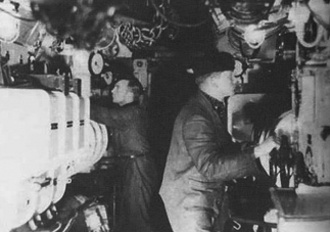
British Cold War frigates Type 81 Tribal
British Cold War frigates Type 81 Tribal. The frigate HMS Tartar in 1983, after the completion of the reactivation associated with the Fakland/Malvinas War. A year later, she left the Royal Navy flag and raised the Indonesian one. The Westland Wasp HAS.1 helicopter is a target for ships of this class on the landing site. In front of the navigation bridge "police" 20-mm "Oerlikons". Photo Collection of Leo van Ginderen
After the end of World War II, Britain embarked on a large-scale shipbuilding program focusing on frigates. One of the breakthrough decisions made in the course of this work was the creation of projects for ships for various purposes based on a common hull and engine room. This was aimed both at accelerating their construction and at reducing unit costs.
Unfortunately, as it soon turned out, this revolutionary idea did not work, and this idea was abandoned during the construction of the Salisbury and Leopard ships. Another idea of the Admiralty, which, although it was bold and risky, was a step in the right direction, i.e. designing a multi-purpose ship capable of performing tasks previously assigned to various units. At that time, priority was given to the fight against submarines (SDO), the fight against air targets (APL) and the implementation of radar surveillance tasks (DRL). Theoretically, frigates built according to this concept would be an ideal means of carrying out patrol tasks during the Cold War that was going on at that time.
With the name of famous predecessors
The first phase of the frigate building program, begun in 1951, resulted in the acquisition of three highly specialized units: anti-submarine warfare (Type 12 Whitby), air target combat (Type 41 Leopard) and radar surveillance (Type 61 Salisbury). . A little over 3 years later, the requirements for newly built Royal Navy units were tested. This time it was supposed to acquire a larger number of more versatile frigates.
The new ships, later known as the Type 81, were designed from the outset to be multi-purpose, capable of performing all three of the aforementioned critical missions in every region of the globe, with particular emphasis on the Middle and Far East. (including the Persian Gulf, East and West Indies). They would replace the Loch-class frigates of World War II. Initially, a series of 23 such ships was planned, but due to a significant increase in the cost of their construction, the entire project was completed with only seven ...
The concept of the new ships included, in particular, the use of a larger hull than on previous frigates, taking advantage of the combination of features of steam and gas turbines, as well as the installation of more modern artillery and SDO weapons. It was finally approved by the Ship Design Policy Committee (SDPC) on 28 October 1954. The detailed design of the new units was officially named the general purpose frigate (CPF) or the more common sloop (general purpose escort). The classification of ships as Sloopy was officially adopted by the Royal Navy in mid-December 1954. This was to be directly related to the units widely used in the first half of the 60th century and during World War II for patrol, flag display and anti-submarine combat (which evolved into these tasks during World War II). Only in the mid-70s was their classification changed to the target one, i.e. on multi-purpose frigates GPF class II (General Purpose Frigate). The reason for this change was rather prosaic and related to the limitation imposed by NATO on the UK to have a total of 1954 frigates in active service. In 81, the project also received a numerical designation - type XNUMX and its own name Tribal, which referred to the destroyers of the Second World War, and the names of individual ships perpetuated the warlike peoples or tribes that inhabited the British colonies.
The first Tribali project, presented in October 1954, was a ship with dimensions of 100,6 x 13,0 x 8,5 m and armament, incl. 2 twin 102 mm guns based on Mk XIX, 40-man Bofors 70 mm L/10, jug (mortar) PDO Mk 20 Limbo (with ammunition for 8 volleys), 533,4 single 2 mm torpedo tubes and 51 quadruple 6 mm torpedo tubes rocket launchers. In order to be able to fulfill the requirements for radar surveillance, it was decided to install the American SPS-162C long-range radar. The sonar equipment was to consist of sonar types 170, 176 (to generate survey data for the Limbo system), 177 and XNUMX. Their transducers were planned to be placed in two large missiles under the fuselage.

